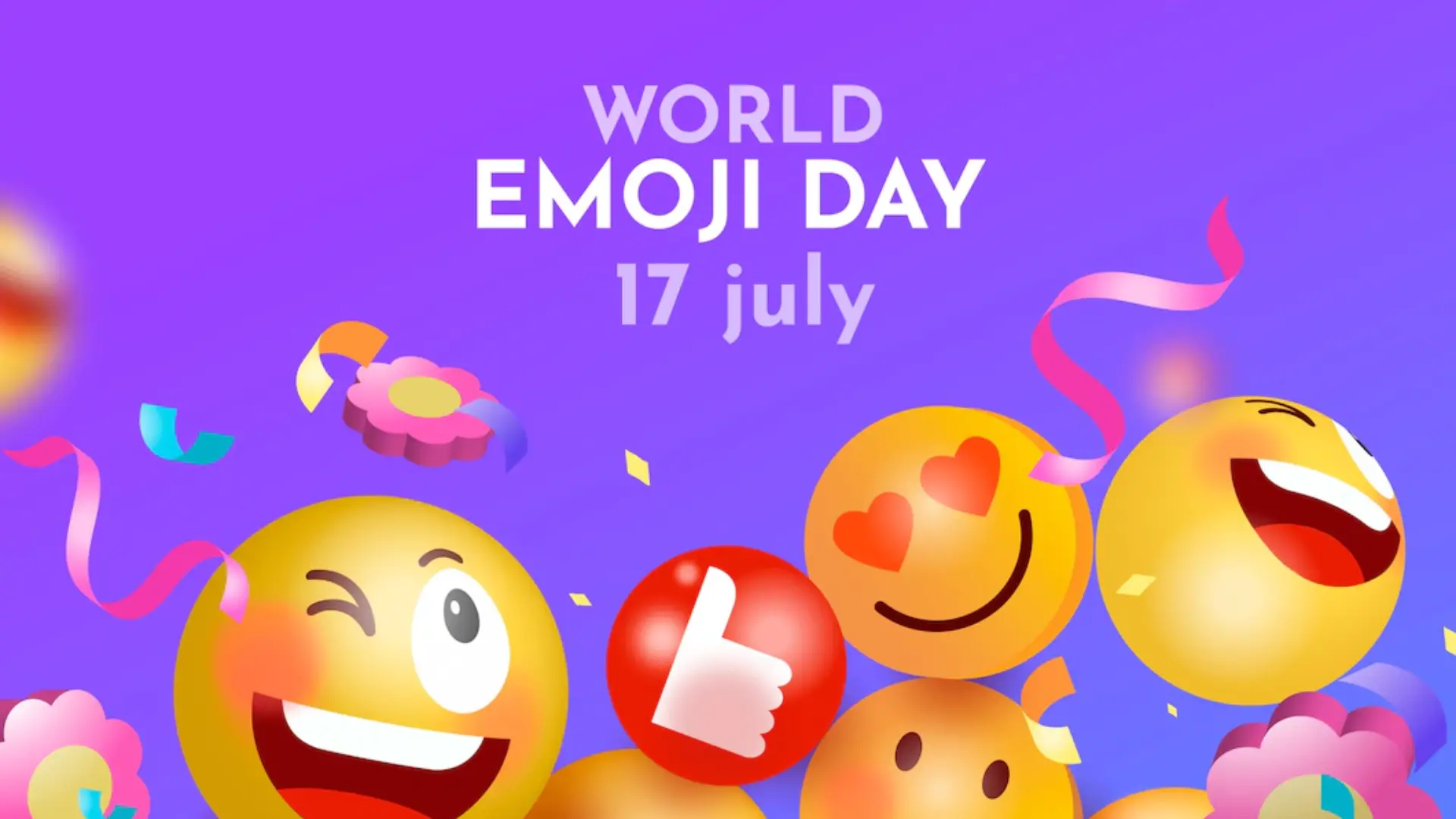On July 17th, we celebrate the World Emoji Day 🗺️🤩📆, and there has never been a more opportune moment to embrace these adorable and vibrant little communication symbols.
Emojis are now practically a requirement for all of our interactions in the world of digital communication, appearing on almost every tap, type, or text. Over 10 billion emojis are shared daily by all users, or nearly seven million of these expressive images are sent and received every minute.
The Evolution and Impact of Emojis
With time, emojis have developed into a sophisticated visual language and have become an essential component of digital communication. On World Emoji Day, we examine the history, evolution, and impact of these widely used symbols.
The Birth of Emojis
Shigetaka Kurita, an employee of Japanese mobile provider NTT DoCoMo, invented the first emoji in 1999. The responsibility of creating a visual language to aid in communication in the era of rapidly increasing mobile internet fell to Kurita. He created a collection of 176 simple emojis using kanji characters and manga comics as inspiration.
These basic emojis for the weather, road signs, technology, and emotions served as the prototype for the modern emojis that we use today. The word “emoji” is a combination of the Japanese words “e” (for image) and “moji” (for character). In Japan, emojis swiftly gained popularity and were added to carriers’ mobile phone platforms.
Spreading International Adoption
Emojis remained largely a Japanese phenomenon until Apple included an emoji keyboard on its iPhone in 2011. This helped drive widespread international adoption. As emojis became available on various mobile operating systems and social media platforms, their use skyrocketed.
The Oxford English Dictionary named the “Face with Tears of Joy” emoji (🤣) as its 2015 Word of the Year, highlighting the emergence of emojis into mainstream communication. Emoji culture had gone global.
Evolving and Expanding Emoji Libraries
The Unicode Consortium manages the emoji standard and approves new emojis each year, enabling their compatibility across platforms. Emoji libraries have grown from 176 in 1999 to over 3,000 today.
New emojis are added based on proposals from companies like Apple, Google, and Twitter, with the goal of representing more people, places, objects, and ideas. Recent additions include gender-neutral options, disabilities, foods like bubble tea, and even the trans flag.
Driving Communication and Connection
Studies show that over 90% of online users employ emojis. This visual language transcends barriers of language and geography, providing a universal means of expression. Emojis help add tone, colour, and fun to digital interactions.
Specific emojis have come to convey shared cultural meaning and experiences, like the laughing-crying face (🤣) denoting humour. Emojis enable us to communicate visually in an increasingly digital world.
Cultural Impact
Emojis have made their way into popular culture, art, politics, and business. The “Face with Tears of Joy” emoji was painted onto a mural in Melbourne, Australia. An all-emoji version of Herman Melville’s novel Moby Dick was published in 2010. Emojis even appear as ballots options in Russia’s general election.
Brands like McDonald’s and Coca-Cola have adopted emojis into their marketing. The global Emoji Movie in 2017, while panned by critics, shows their cultural footprint. Emojis are now a fundamental way we communicate, transcending their digital origins.
On World Emoji Day, reflect on how these playful images enable global connection. Over two decades, emojis have evolved from a simple set of 176 into an expansive visual language at the heart of digital communication. Their future promises to be just as interesting as their past.
What emoji is most commonly used?
These days, emojis are almost often used in digital communication—barely a tap, write, or text goes by without one. Every day, we all share more than 10 billion emojis. That works out to around seven million each minute.
Emoji use is also growing rapidly at work, with some younger employees worrying if their colleagues will be upset if they don’t include one in a professional email.
The top 10 emojis currently being used in 2023 are listed below:
1. 😂 Face with Tears of Joy
2. 🤣 Rolling on the Floor Laughing
3. ❤️ Red Heart
4. 🙏 Folded Hands
5. 😭 Loudly Crying Face
6. 😍 Smiling Face with Heart-Eyes
7. ✨ Sparkles
8. 🔥 Fire
9. 😊 Smiling Face with Smiling Eyes
10. 🥰 Smiling Face with Hearts
Emoji Day serves as a reminder of how these little digital symbols have transformed how we communicate, improving the expressiveness, levity, and accessibility of interactions. Emojis will surely continue to develop and reflect a wide range of emotions and ideas as they become a more integral part of our digital language, bridging geographical boundaries and going beyond the bounds of printed text. So let’s celebrate the colourful emoji world and its influence on how we express ourselves in the contemporary digital era on this Emoji Day.


